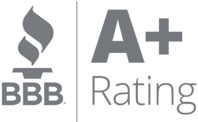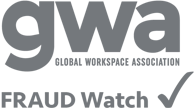![Answering Return-to-Work FAQs [19 Questions to Include]](https://davincilive.blob.core.windows.net/files/Blog/2020/August/pspenceaug20202.jpg)
Answering Return-to-Work FAQs [19 Questions to Include]
Depending on the location of a business (as each state has issued their own regulations), some business have reopened or partially reopened their offices. The U.S. Centers for Disease Control and Prevention (CDC) provides guidance. Before they can think about reopening, businesses must answer yes to all of the following questions:
• Are you in a community no longer requiring significant mitigation or have lifted operational restrictions permitting only essential critical workers to return to work from the office?
• Will you be able to limit non-essential employees to simply those from the local geographic area?
• Do you have protective measures for employees at higher risk such as remote, telework options that minimize contact?
Return to Work Gives Rise to Numerous Questions
But these protocols are just the tip of the iceberg when it comes to other recommendations from the CDC. Businesses must change physical workspaces and implement a list of policies and procedures for social distancing, sick employees, employees with disabilities who are at higher risk, and more. And with COVID-19 infection rates still on the rise in many areas, it is no surprise that more than half of the U.S. workforce are afraid to return to their former workplaces.
One of the steps businesses need to consider as they move towards opening their offices or asking employees to return to coworking spaces is the development of a comprehensive FAQ. Employees will need to understand what is being done to protect them from potential virus infection as well as what protocols must be followed while they are working from the office or a coworking space.
List of Return-to-Work FAQs
Following are some of the key elements that businesses need to include in their return-to-work FAQ.
1. What protocols are in place to enforce social distancing?
Organizations will need to specific how they will enforce social distancing—from the distance between workspaces to the use of flexi-glass sneeze protectors.
2. Are employees required to wash their hands at specified frequencies and how is this enforced?
Hand washing is a critical prevention, and many organizations are considering requirements for such as specified intervals. Organizations will need to ensure employees are trained and assent to the specification as well as codify monitoring and enforcement policies.
3. Will employees be allowed to continue working remotely?
Not every employee can be treated the same as organizations return to work. The Occupational Safety and Health Administration (OSHA) recommends that employers establish workspaces that promote social distancing. But for employees seeking to work remotely, organizations will need to codify a set of policies for determining how those requests are received and evaluated. For employees who are at higher risk, the Americans with Disabilities Act (ADA) requires reasonable accommodation for individuals with disabilities. These individuals can be defined more broadly than under normal circumstances due to COVID-19 and the fact that it poses more risk to those with compromised immune systems.
4. Will and how will in-person meetings occur?
Meetings as usual are likely not going to take place until a vaccination is found and made widely available. Yet, for businesses that reopen their offices, they need to limit the total number of meetings and to conduct many virtually—t least those that do not require in-person attendance. As part of this process, businesses should post the maximum number of workers who can gather in a meeting room with a “Maximum Occupancy” sign. They may even block meeting registration based on the number of attendees who are invited. Inclusion of plexiglass shields on tables to separate meeting participants may need to be considered for installation.
5. How and when will sanitization of workspaces and meeting rooms take place?
Workspace sanitization will need to be documented and followed throughout the day. The same applies to meeting rooms that require protocols for sanitization between meetings throughout the workday.
6. When will employees be able to resume business travel?
Most organizations continue to ban employees from business travel. Once the re-openings reach a certain point, some business travel may be allowed—though such must be done in compliance with CDC and local health authorities and guidelines. Businesses will need to indicate what is permissible and what protocols need to be followed to ensure appropriate approval for travel. These need to include post-travel policies (e.g., can a worker return to the office right away, etc.?).
7. Can office events and celebrations resume?
Employee get-togethers and celebrations are positive team-building exercises. But due to COVID-19, recommendations are to skip them for now and to make them virtually instead.
8. What food protocols should be followed?
Employees should not provide beverage pitches, food containers, utensils, and buffets. Use of office kitchens, refrigerators, water coolers, and coffee and tea machines require documented policies on usage as well as sanitization (frequency and by whom).
9. What policies have been updated?
Certain company policies on paid sick leave, work from home, and so forth likely need to be updated due to changes in state and local paid sick leave and other laws. Work-from-home FAQs need to include what updates were made.
10. What happens if an employee working in the office tests positive to COVID-19?
When/if an employee tests positive to COVID-19, a business needs to have the correct set of procedures in place for what can/should be communicated to other employees (must be compliant with privacy laws) and what sanitization protocols are required.
11. What to do if an employee becomes sick at work?
Businesses need to document containment policies in the event a worker becomes sick while at work. This includes communications of the event to other employees, how “close-contact” and length of contact are defined, mandatory temperature checks, sanitization procedures, and others.
12. How should employees greet an interact with each other?
Previous forms of physical greeting and congratulations—handshakes, backslaps, and other forms of physical contact—are no longer permissible during COVID-19. Employers should list not only what is not permissible for greeting but what is preferred/recommended instead.
13. Will COVID-19 testing be required and if so under what circumstances?
Some businesses may require that all of their employees be tested for COVID-19 before returning to the office. While not every business may require testing when reopening their offices, testing may be required in the event that an employee tests positive. As part of this process, businesses need to list how test results are communicated and what happens in the event of a positive test result.
14. Will personal protective equipment be provided and are all employees required to wear it?
If employers require the use of personal protective equipment, they may need to reimburse employees for the cost. They also need to specify if they must wear the personal protective equipment and what allowance exist for certain employees to be exempt.
15. Will hourly, non-exempt employees be compensated for health screening time?
For the amount of time required for COVID-19 testing, businesses need to indicate if they can count the time.
16. What protocols are required for non-employees visiting the office?
For vendors and other non-employees who come on site, documented policies need to exist such as whether they need to take a COVID-19 test before coming on site, what responsibilities do they have for communicating positive tests of workers after office visits, and approval/notification processes for requesting a third-party visit.
17. Will workers be required to take a vaccine once one is available?
Normally, employees are not mandated to take vaccines. However, given the unique nature of the COVID-19 pandemic, those waivers may not exist.
18. How can potential employees be vetted and tested?
Virtual interviews should be the norm unless circumstances require an on-site interview. Once a candidate is made a job offer, employees need to indicate if pre-employment medical exams and testing will be required as a condition of work or ability to work from the office workspace.
19. How to use virtual coworking and meeting space?
Not every company maintained permanent office space before COVID-19, and even more are reevaluating their reliance on permanent office space as a result of the pandemic. In these instances, businesses need to vet the third-party virtual office space and coworking space providers to determine their sanitization and other processes comply with their own policies and processes. This is where proven virtual office and meeting room providers like Davinci Meeting Rooms can help.
Returning to Work and Working in the Age of the Pandemic
Running a business effectively without COVID-19 is hard enough. As businesses begin to evaluate when and how to return to work from their offices or coworking spaces and to use rented meeting space, development, communication, and enforcement of policies and procedures is going to be critical. Part of that process includes creating a work-from-home FAQ that clarifies and answers a long list of employee questions. These will ease employee concerns while ensuring the right safety and health protocols are in place and being followed.

LinkedIn Profile: LinkedIn
Website: www.tirocommunications.com
Categories
- Business Marketing
- Business Resources
- Customer Success Stories
- Customer Success Stories: Communications
- Customer Success Stories: Meeting Rooms
- Customer Success Stories: Virtual Office
- Entrepreneur Tools
- Management
- Meeting Rooms
- Virtual News
- Virtual Office
- Virtual Receptionist Services
- Workplace Culture
Subscribe to Our Blog
Archive

- November 2025
- October 2025
- September 2025
- August 2025
- July 2025
- June 2025
- May 2025
- April 2025
- March 2025
- February 2025
- January 2025
- December 2024
- November 2024
- October 2024
- September 2024
- August 2024
- July 2024
- June 2024
- May 2024
- April 2024
- March 2024
- February 2024
- January 2024
- December 2023
- November 2023
- October 2023
- September 2023
- August 2023
- July 2023
- June 2023
- May 2023
- April 2023
- March 2023
- February 2023
- January 2023
- December 2022
- November 2022
- October 2022
- September 2022
- August 2022
- July 2022
- June 2022
- May 2022
- April 2022
- March 2022
- February 2022
- January 2022
- December 2021
- November 2021
- October 2021
- September 2021
- August 2021
- July 2021
- June 2021
- May 2021
- April 2021
- March 2021
- February 2021
- January 2021
- December 2020
- November 2020
- October 2020
- September 2020
- August 2020
- July 2020
- June 2020
- May 2020
- April 2020
- March 2020
- February 2020
- January 2020
- December 2019
- November 2019
- October 2019
- September 2019
- August 2019
- July 2019
- June 2019
- May 2019
- April 2019
- March 2019
- February 2019
- January 2019
- December 2018
- November 2018
- October 2018
- September 2018
- August 2018
- July 2018
- June 2018
- May 2018
- April 2018
- March 2018
- February 2018
- January 2018
- November 2017
- October 2017
- September 2017
- August 2017
- July 2017
- June 2017
- March 2017
- February 2017
- December 2016
- November 2016
- October 2016
- September 2016
- June 2016
- April 2016
- March 2016
- January 2016
- December 2015
- November 2015
- September 2015
- August 2015
- July 2015
- June 2015
- March 2015
- January 2015
- November 2014
- October 2014
- August 2014
- July 2014
- May 2014
- April 2014
- January 2014
- October 2013
- September 2013
- June 2013
- April 2013
- February 2013
- January 2013
- December 2012
- November 2012
- October 2012
- September 2012
- August 2012
- July 2012
- June 2012
- May 2012
- April 2012
- March 2012
- February 2012
- January 2012
- December 2011
- November 2011
- October 2011
- September 2011
- April 2011
- March 2011
- January 2011
- December 2010
- October 2010
- September 2010
- July 2010
- June 2010
- April 2010
- March 2010
- January 2010
Talk to an expert
Want to know more about our Virtual Offices? Give us a call
Get the Perfect Virtual Address Now
Find a Virtual OfficeServices
Virtual Offices Virtual Office Features What is a Virtual Office? Full Time Spaces Live Receptionist Live Receptionist Features Virtual Phone Number Meeting Spaces Meeting Space Features Coworking Spaces Event Spaces Marketplace Incorporation Services Search Virtual Office Services Near MeInstant Group
- © 2025 Davinci virtual office







